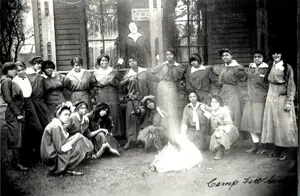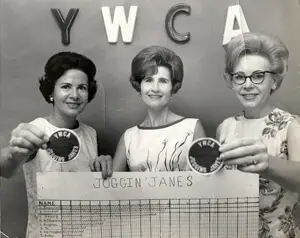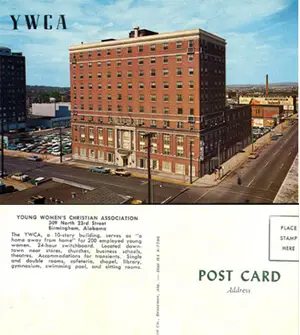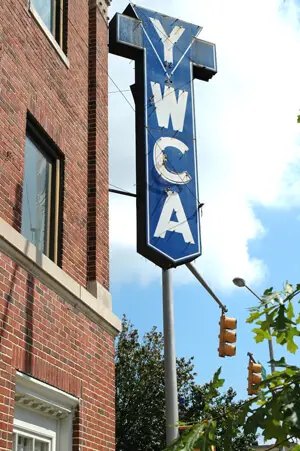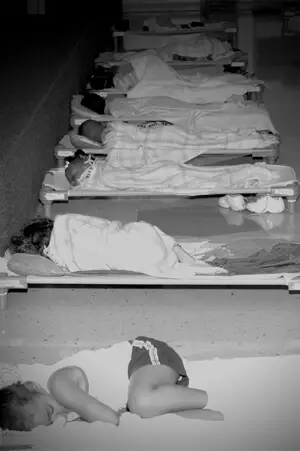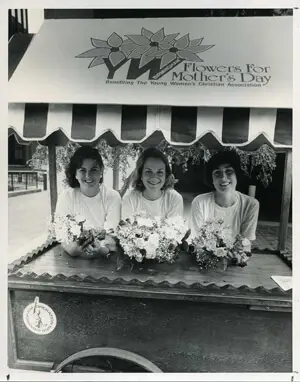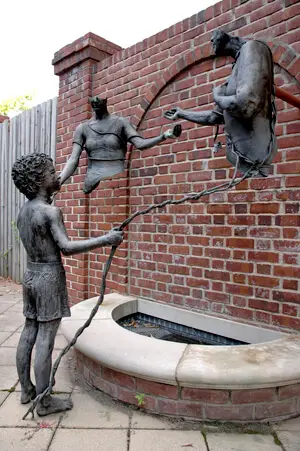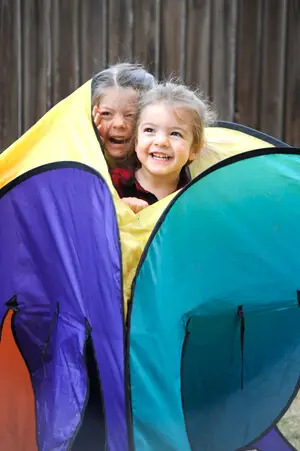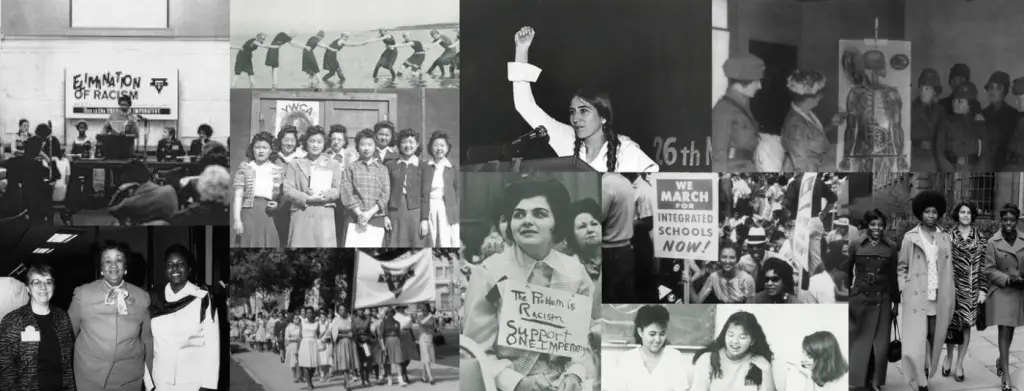1965
Standing For What Is Right
At a time when race relations are turbulent, the central YW seeks a closer tie with the YWCA branch. Many black and white women come together to plan and develop programs, in spite of criticism. The YWCA loses some supporters.
1972
Tightening the Belt
The Board makes a commitment to stay downtown and serve the neediest of women. The members undertake another fundraising drive to keep the program operational and renovate the facility, despite the pressure from many to move to the suburbs.
1977
Branch YWCA Closes
The building is condemned and funds are unavailable to renovate. Programs are decentralized.
1979
The Passing of Leadership
Suzanne Durham, another young woman with boundless energy and commitment, becomes Executive Director of the YWCA.
1984
Nurturing the Very Young
Although the need for residential housing is declining, the need for affordable, quality child care is rising. The YWCA opens a child care program at its downtown location.
At Home Alone
Joining with the Junior League of Birmingham, the YWCA delivers a very effective educational program giving latchkey children information and confidence about staying safe.
1985
Junior Board Formed
YWCA’s Junior Board has its first formal meeting at noon on Wednesday, July 31, 1985, at the Downtown Club. On July 3, 1985, a letter was sent to young women involved in the community to form the Junior Board of the YW “for the sole purpose of building awareness and support of the YW.”
1986
Domestic Violence
The YWCA assumes the operation of the Family Violence Center, which is housed at a confidential location, and provides safe shelter and counseling to victims of domestic abuse.
1986
Flowers for Mother
The new Junior Board initiates the successful Mother’s Day Flower Sale, raising funds and visibility for the agency. This fundraising event continued 27 years with the proceeds going to support the day care program for homeless children.
1987
A Place to Stay
For the first time, the YWCA provides transitional housing for families who are leaving emergency homeless shelters and moving toward self-sufficiency.
1989
Homeless child care
Reaching out to families in crisis, the agency begins a child care program for homeless families living in local shelters.
1990
Offering a Hand
The Court Advocacy program begins offering abused women help and guidance through the court system.
1992
Reaching Across Generations
The Joan L. Hicks Memorial Intergenerational Playground opens, providing an imaginative place for the YW’s children to play and a restful garden area for the older adult residents.
1993
Creating Room for Peace
The Gauld-Rast Peace Garden is completed. A special ceremony unveils a fountain sculpture, which symbolizes nurturing, growth, security and hope through the figures of an older woman, a mother and a child who are intertwined lovingly and firmly to one another.
1994
Helping Children in Crisis
The YW initiates a new program, Children in Crisis (CIC), for children who have witnessed domestic violence in their homes. The program, with the support of United Way and the Junior League, focuses on support groups, advocacy and education.
1996
Renew and Rebuild
The YWCA launches its capital campaign with a goal of $10.5 million to renovate the downtown facility. The art deco style building was constructed in 1925 as the Birmingham Men’s Athletic Club. In 1948, the YW bought the building and it has been home ever since. Except for needed repairs, the building has never undergone a total restoration.
